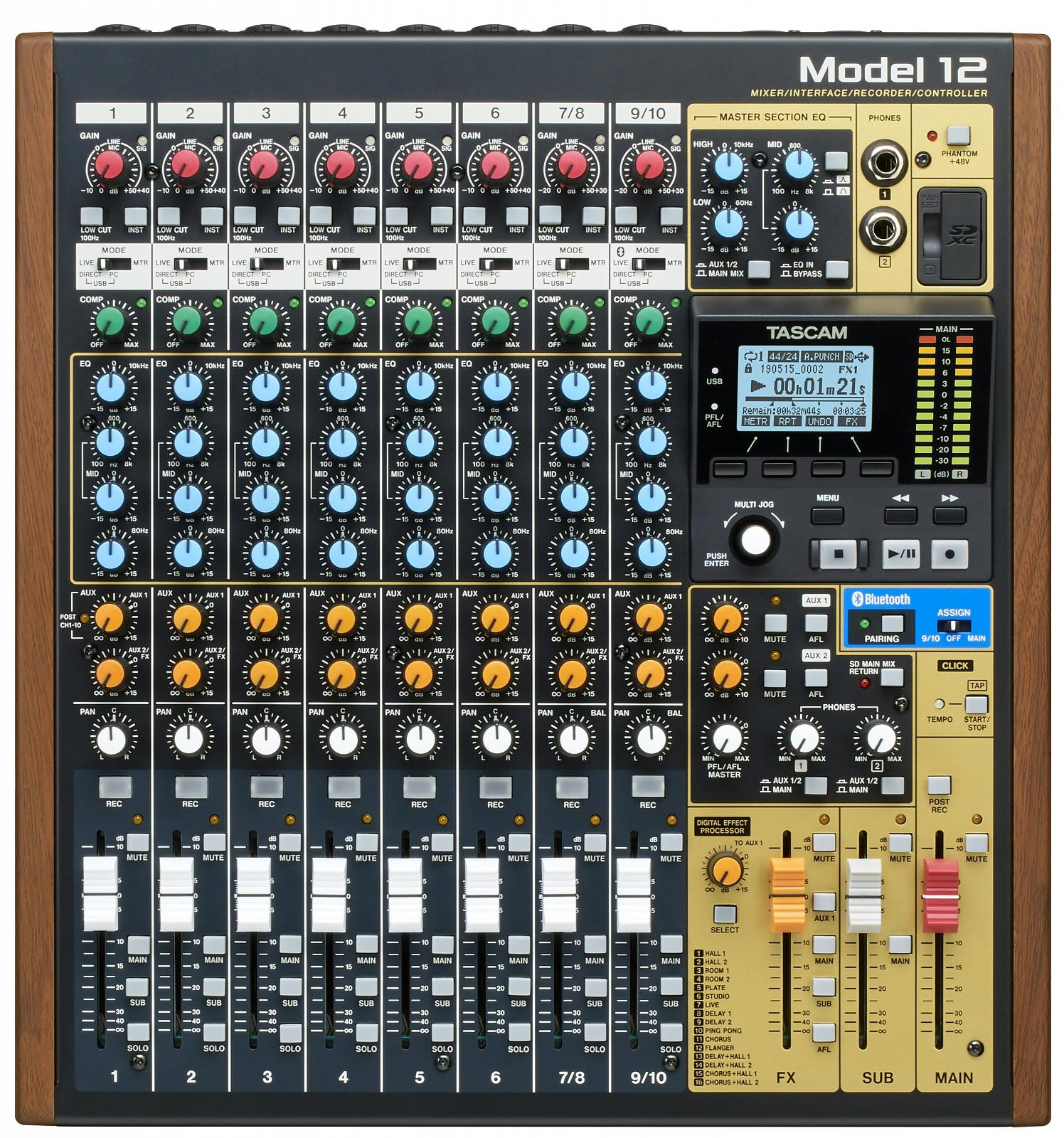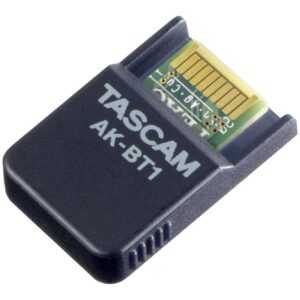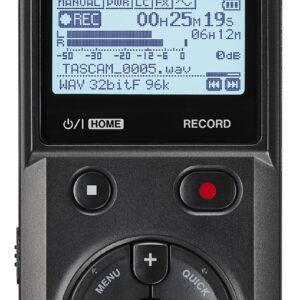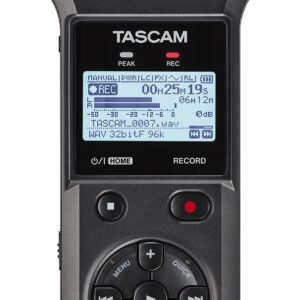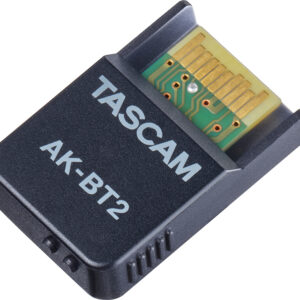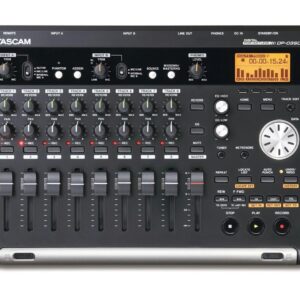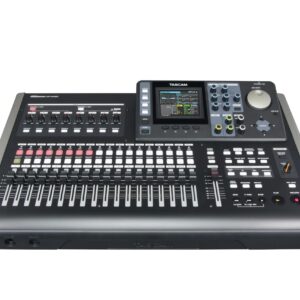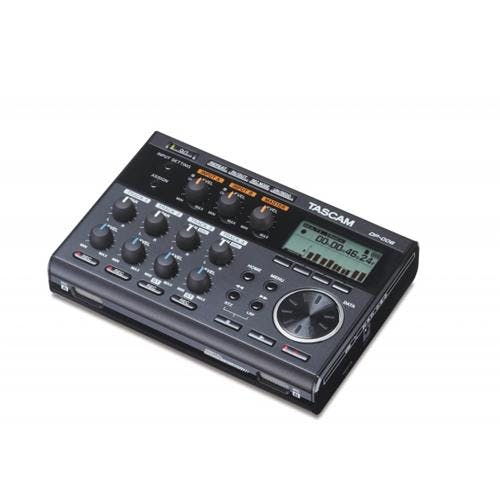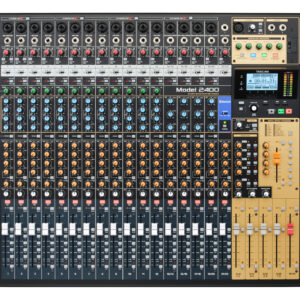Description
The Tascam Model 12 – 10-Channel Analogue Mixer With 12-Track Digital Recorder & USB Interface is made by Tascam. If you are looking for a great & Recorder Digital With 12-Track Mixer Analogue 10-Channel – 12 Model Studio Mixers Recording Equipment . The Tascam Model 12 – 10-Channel Analogue Mixer With 12-Track Digital Recorder & USB Interface is preorder from Synth for Sale now for £499 with delivery to all areas of the UK/Europe & USA. . Tascam Model 12 – 10-Channel Analogue Mixer With 12-Track Digital Recorder & USB Interface
We have new and used Tascam musical equipment available on our website for fast direct delivery from sellers across the UK & Europe.
£754.98
12 in / 10 Out USB Audio Interface for DAW Connectivity Click Output with TAP TEMPO Onboard MIDI Functionality 1-knob compressor and 3 band EQ installed on all input modules Dual headphone output with individual volume and source selection
£75.00 £60.00
This is new 7-channel Bluetooth mixer, built-in wireless Bluetooth, DSP reverberation effect, 3-band equalization adjustment, comes with USB interface, support U disk playback function. Reminder: This kind of mixer is a traditional analog product, so…
read more
£153.00
Extensive Functionality: The Audio Mixer features 99 DSP Reverb for powerful, natural sound effects that enhance the spatial quality of your audio. With a 7-Band Equalizer, you can effortlessly adjust music smoothness for a richer sound. Rich Feature…
read more
£386.50
The compact Yamaha MG12XUK mixer combines quality craftsmanship with rich studio sound, suitable for solo artists and small bands The mixing desk is equipped with 12 input channels and D-PRE microphone preamps, delivering a natural sound with detaile…
read more
£97.30
USB/Flash Reader /MP3 or Bluetooth device are very easy to connect this mixer to Mix & record; Built in built in controls provide friendly experience to play/pause, skip tracks and switch between modes Ultra-thin and Rugged Chassis: With only 1.4 inc…
read more
An analogue synthesiser is a type of electronic instrument that generates sound through analogue circuitry, using voltage-controlled oscillators (VCOs), filters, and amplifiers to create and manipulate audio signals. Unlike digital synthesizers, which use binary code and samples to produce sounds, analogue synths rely on continuous electrical signals, resulting in a warm and rich tonal quality often associated with classic music production. The sound generation process typically involves shaping waveforms, such as sawtooth, square, or sine waves, which can be further modified using various modulation techniques, allowing musicians to create a diverse range of sounds and textures.
Analogue synthesizers often feature hands-on controls, such as knobs, sliders, and switches, providing a tactile and intuitive interface for sound design. This direct interaction allows musicians to manipulate parameters in real-time, fostering creativity and experimentation during live performances or studio sessions. Although they may require more effort to program compared to their digital counterparts, analogue synthesizers are cherished for their unique character, unpredictability, and the organic nature of their sound, making them a favourite among electronic musicians, composers, and sound designers seeking to capture the essence of classic synthesis in their work.
This synthesiser employs digital technology to produce sounds, offering a wide range of features and capabilities. Digital synthesis allows for complex sound design, including extensive modulation options and the ability to emulate various acoustic instruments. With its precision and versatility, this instrument is perfect for modern music production, live performance, and creative exploration.
A mixer, or mixing console, is a fundamental tool in audio production used to manage and combine multiple audio sources into a cohesive output. In both live sound settings and studio environments, mixers allow for precise control over the sound, making it possible to adjust each audio channel’s volume, tone, and effects. Each channel typically corresponds to an input, such as a microphone, instrument, or pre-recorded track, and has controls for volume (gain), equalisation (EQ), and effects. This enables sound engineers and musicians to balance the levels of each sound source, ensuring that all parts of a performance or recording are heard clearly without overpowering one another.
Beyond basic control, mixers also offer routing options, which allow audio signals to be sent to various destinations, like speakers or recording devices, for different uses. Many mixers also feature panning controls that let sounds be positioned from left to right in the stereo field, creating a richer listening experience. Some models have built-in effects like reverb and delay, which can be applied to individual channels or the overall mix. Whether in a live venue or a recording studio, mixers are essential tools that provide the control necessary to create a polished, balanced sound.
